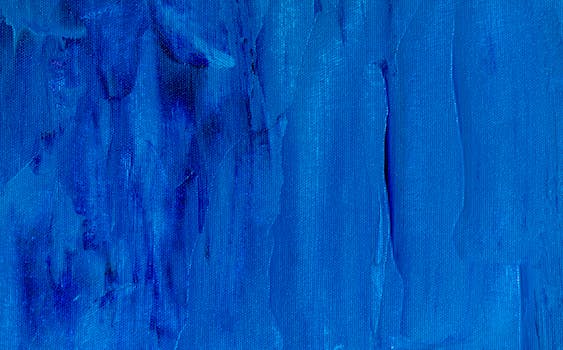Are you tired of the same old paint job in your home? Want to add some creativity and uniqueness to your walls? Look no further! In this article, we’ll explore 10 unique wall painting techniques that will transform the look and feel of your home. From ombre to stenciling, we’ve got you covered. So, let’s dive in and discover how you can elevate your walls to the next level!
- 1. Introduction
- 1.1. Why unique wall painting techniques are important
- 1.2. History of unique wall painting techniques
- 1.3. Benefits of using unique wall painting techniques
- 1.4. Popular unique wall painting techniques
- 1.5. Materials required for unique wall painting techniques
- 2. Sponging Technique
- 2.1. What is sponging technique
- 2.2. How to prepare the wall for sponging
- 2.3. Step-by-step guide to sponging technique
- 2.4. Tips for achieving the desired effect
- 2.5. Examples of sponging technique
- 3. Stenciling Technique
- 3.1. What is stenciling technique
- 3.2. How to prepare the wall for stenciling
- 3.3. Step-by-step guide to stenciling technique
- 3.4. Tips for achieving the desired effect
- 3.5. Examples of stenciling technique
- 4. Tapestry Technique
1. Introduction
Are you tired of staring at the same plain walls in your home day after day? Want to add a pop of color or texture to liven up your space? Look no further than these 10 unique wall painting techniques. From ombre to stenciling, these techniques are sure to transform your home and make it feel brand new. Get ready to unleash your inner artist and create a space that truly reflects your personal style and taste.
1.1. Why unique wall painting techniques are important
Unique wall painting techniques can make all the difference in transforming a home from ordinary to extraordinary. Whether it’s adding texture, depth, or a pop of color, these techniques can create a personalized and unique look that reflects your style and personality. In this article, we will explore 10 unique wall painting techniques that can completely transform your home.
1.2. History of unique wall painting techniques
Wall painting has been a popular form of art for centuries, with evidence of unique techniques dating back to ancient civilizations. From Egyptian frescoes to Renaissance murals, there have been countless ways to transform plain walls into stunning works of art. In today’s modern age, there are even more unique wall painting techniques to choose from, each offering a way to add personality and style to your home. Whether you are looking for a bold statement or a subtle accent, these 10 unique wall painting techniques are sure to inspire your next home makeover.
1.3. Benefits of using unique wall painting techniques
Using unique wall painting techniques can transform the look and feel of your home. Not only can it add a pop of color and personality to your walls, but it can also create a sense of depth and texture. Additionally, using unique techniques such as ombre, stenciling, or mural painting can make your walls stand out and become a focal point in any room. Overall, incorporating unique wall painting techniques can enhance the aesthetic appeal of your home and create a space that is truly one-of-a-kind.
1.4. Popular unique wall painting techniques
Wall painting is an excellent way to add a touch of personality to your home. With the right techniques, you can achieve unique and eye-catching designs that will transform any room. In this article, we will explore ten of the most popular and unique wall painting techniques that you can use to breathe new life into your home. From geometric patterns to ombre gradients, these techniques will inspire you to get creative and unleash your inner artist.
1.5. Materials required for unique wall painting techniques
To achieve a unique and stunning wall painting for your home, you need to use the right materials. These materials include paint, brushes, rollers, painter’s tape, drop cloths, and stencils. The type of paint you use will depend on the technique you plan to use. For instance, you can use acrylic paint for a sponge painting technique while oil-based paint works well for a glazing technique. Brushes and rollers come in different sizes and shapes, and you should choose them based on the effect you want to achieve. Painter’s tape is essential for creating sharp and clean lines, while drop cloths protect your floors and furniture from paint splatters. Finally, stencils are perfect for creating intricate designs and patterns.
2. Sponging Technique
One unique wall painting technique that can transform your home is sponging. This technique involves dipping a sponge into paint and lightly dabbing it onto the wall to create a textured, mottled effect. Sponging can be done with one color or multiple colors to create a more intricate design. It’s a great way to add depth and dimension to a room without being too overpowering. Sponging works well with both matte and glossy paints and can be used in any room of the house. It’s a fun and easy technique to try for anyone looking to add some personality to their walls.
2.1. What is sponging technique
Sponging technique is a unique wall painting technique that involves using a sponge to create a textured effect on the walls. The sponge is dipped in paint and then dabbed onto the wall, creating a subtle and varied pattern. This technique is often used to create a rustic or vintage look, and can be done in a variety of colors to match any decor style. Sponging is a relatively easy technique to master, and can be a fun DIY project for homeowners looking to add some personality to their walls.
2.2. How to prepare the wall for sponging
Before you start sponging your walls, it’s important to properly prepare them to ensure the best results. Start by cleaning the walls thoroughly with soap and water to remove any dirt or grime. If there are any holes or cracks in the wall, fill them with spackle and let it dry completely before sanding it down. Next, apply a coat of primer to the wall and let it dry completely. This will help the paint adhere better and prevent any bleeding through of old paint or stains. Once the primer is dry, you’re ready to start sponging!
2.3. Step-by-step guide to sponging technique
Step-by-step guide to sponging technique:
1. Choose your base color and apply it to the wall. Allow it to dry completely.
2. Pour a small amount of your secondary color into a paint tray.
3. Dip your sponge into the secondary color and blot off any excess paint onto a paper towel.
4. Lightly press the sponge onto the wall, applying the secondary color in a random pattern.
5. Continue sponging until you achieve the desired effect.
6. Allow the paint to dry completely before adding any additional layers or designs.
7. For a more subtle effect, use a dry brush to blend the colors together.
Remember, practice makes perfect! Experiment with different colors and techniques to find the perfect sponging effect for your home.
2.4. Tips for achieving the desired effect
To achieve the desired effect with the sponging technique, start by selecting the base color for your wall and applying it evenly. Once the base coat is dry, dip a sponge into a contrasting color of paint, and then use the sponge to dab the paint onto the wall in a random pattern. Vary the amount of paint on the sponge and the pressure you apply to create a textured, multi-dimensional look. Experiment with different colors and sponge shapes to achieve the desired effect.
2.5. Examples of sponging technique
One popular wall painting technique is sponging, which involves using a sponge to apply paint in a mottled pattern. This technique works well for creating a textured, rustic look on walls. To achieve this effect, start by choosing two or three paint colors that complement each other. Then, apply the base coat and let it dry completely. Next, dip a clean sponge into one of the accent colors and lightly dab it onto the wall in a random pattern. Repeat with the other accent colors, blending as you go. Keep in mind that the amount of paint on the sponge will affect the intensity of the color, so experiment with different levels of saturation until you achieve the desired look.
3. Stenciling Technique
Stenciling is a great technique for adding patterns and designs to walls. It involves using a template or stencil to create a repeating pattern or image. Stencils can be purchased or created yourself using materials such as cardboard or plastic. To use a stencil, simply place it on the wall and use a small roller or brush to apply paint. Stenciling can be done in a single color or multiple colors for a more intricate design. This technique is perfect for adding a unique touch to any room in your home.
3.1. What is stenciling technique
Stenciling technique is a decorative painting technique that involves creating patterns or designs on a surface using stencils. Stencils are pre-cut templates that can be made from a variety of materials such as paper, plastic, or metal. The stencil is placed on the surface to be painted, and paint is applied over the stencil using a brush, sponge, or roller. Once the stencil is removed, the pattern or design is left behind on the surface. Stenciling can be used on walls, furniture, and even fabrics to create unique and personalized designs.
3.2. How to prepare the wall for stenciling
Before beginning the stenciling process, it is important to properly prepare the wall. Start by cleaning the wall with a mild detergent and water to remove any dirt or debris. Next, fill in any holes or cracks with spackle and allow it to dry completely. Sand the wall to create a smooth surface and wipe away any dust with a damp cloth. Finally, apply a coat of primer to ensure that the stencil adhesive sticks properly and to create an even base for the paint. Once the primer has dried, you are ready to begin stenciling your design onto the wall.
3.3. Step-by-step guide to stenciling technique
Stenciling is a fun and easy way to add unique patterns and designs to your walls. Here is a step-by-step guide to help you master the stenciling technique:
Step 1: Choose your stencil design and gather your materials. You will need a stencil, stencil adhesive, painter’s tape, a stencil brush, and paint.
Step 2: Clean and prep your wall. Make sure the surface is clean and dry before you begin.
Step 3: Apply stencil adhesive to the back of your stencil and place it on your wall. Use painter’s tape to secure the edges.
Step 4: Dip your stencil brush into the paint and then dab off any excess on a paper towel. Use a straight up-and-down motion to apply the paint to the stencil.
Step 5: Carefully remove the stencil from the wall and reposition it to continue the pattern. Repeat steps 3 and 4 until your wall is complete.
Step 6: Allow the paint to dry completely before removing any painter’s tape or touching up any areas that need it.
3.4. Tips for achieving the desired effect
When it comes to stenciling, there are a few tips that can help you achieve the desired effect. First, make sure that your stencil is properly aligned and secured in place. You can use painter’s tape or adhesive spray to keep it in position. Second, use a stencil brush or sponge to apply the paint. Dip the brush or sponge lightly in the paint and then dab it onto a paper towel to remove excess paint before applying it to the stencil. Third, use a stippling motion rather than a brushing motion to avoid bleeding underneath the stencil. Finally, be patient and allow the paint to dry completely before removing the stencil to avoid smudging or smearing.
3.5. Examples of stenciling technique
Stenciling is a popular technique for adding intricate designs to walls. Here are some examples of stenciling techniques:
1. Damask stenciling – This technique involves using a damask stencil to create a pattern that resembles a traditional damask design.
2. Moroccan stenciling – This technique uses stencils that are inspired by Moroccan tile patterns to create a bold, geometric design.
3. Floral stenciling – This technique involves using stencils of flowers and leaves to create a delicate, feminine design.
4. Abstract stenciling – This technique involves using stencils of abstract shapes and patterns to create a modern, artistic design.
5. Animal stenciling – This technique involves using stencils of animals to create a fun, whimsical design.
Stenciling is a versatile technique that can be used with a variety of paint colors and finishes to create a unique look for any room in your home.
4. Tapestry Technique
Tapestry technique involves using a piece of fabric to create a textured and intricate design on your walls. It is a great way to add some depth and dimension to your space. To create a tapestry effect, you can use a stencil or freehand a design onto the fabric. Then, using a paint roller or brush, apply paint over the fabric and onto the wall. Once the paint has dried, remove the fabric to reveal your unique and beautiful tapestry design.
4.1. What is tapestry technique
Tapestry technique is a unique way of weaving threads together to create a piece of fabric that can be used for decorative purposes. This technique involves the use of a loom, which holds the threads in place while the weaver interlaces them in a specific pattern. The end result is a beautiful piece of fabric with intricate designs and patterns that can be used to adorn walls, furniture, and other items around the home. Tapestry technique has been used for centuries and is still popular today for its ability to create stunning works of art that can be appreciated for years to come.
4.2. How to prepare the wall for tapestry
Before hanging your tapestry, it’s important to prepare the wall to ensure it stays securely in place. Start by cleaning the wall with a damp cloth to remove any dirt or debris. If the wall has any imperfections, such as holes or cracks, fill them in with spackle and allow it to dry completely. Once dry, sand the spackle down until it’s flush with the wall. For added security, you can also use picture hanging strips or adhesive hooks to hold the tapestry in place.
4.3. Step-by-step guide to tapestry technique
Tapestry technique is a popular way of creating unique wall art that adds texture and depth to any room. Follow these simple steps to create your own tapestry masterpiece:
1. Choose your design: Decide on the image or pattern you want to create. You can draw it out or find a template online.
2. Gather your materials: You will need a tapestry needle, yarn or thread in various colors, and a tapestry loom or frame.
3. Set up your loom: Follow the instructions that came with your loom to set it up. If you don’t have a loom, you can make your own by stretching a piece of fabric tightly across a frame.
4. Warp your loom: Thread your yarn or thread vertically through the loom, securing it at the top and bottom.
5. Begin weaving: Using your tapestry needle and yarn, start weaving your design horizontally through the warp threads. Change colors as needed to create your desired pattern.
6. Pack your weft: After each row, use a comb or tapestry beater to pack the weft threads tightly together.
7. Continue weaving: Keep weaving until you have completed your design.
8. Finish your tapestry: Once you’ve finished weaving, carefully remove the tapestry from the loom and tie off the warp threads. Trim any excess yarn and hang your tapestry on the wall.
4.4. Tips for achieving the desired effect
When it comes to the Tapestry technique, there are a few tips that can help you achieve the desired effect. Firstly, choose a design that suits your taste and complements your decor. Secondly, make sure the wall is clean and free of any bumps or debris. Thirdly, use a small roller or brush to apply the base coat. Fourthly, allow the base coat to dry completely before beginning to apply the tapestry design. Finally, take your time and be patient – this technique requires precision and attention to detail, but the end result is well worth the effort.
4.5. Examples of tapestry technique
Tapestry is a form of textile art that involves weaving together different colored threads to create intricate designs. There are various techniques that can be used to create tapestries, each with their own unique style and effect. Some popular tapestry techniques include the following:
1. Weft-faced weaving – this technique involves using a thicker weft thread to create a dense, textured surface.
2. Warp-faced weaving – this technique involves using a thicker warp thread to create a more detailed design.
3. Brocading – this technique involves adding extra threads to create a raised, textured effect.
4. Inlay – this technique involves weaving in different colored threads to create a multi-colored design.
5. Tapestry crochet – this technique involves using a crochet hook instead of a weaving loom to create a tapestry design.
These are just a few examples of the many tapestry techniques that can be used to create beautiful and unique wall hangings.
Conclusion
In conclusion, these 10 unique wall painting techniques can truly transform your home and give it a fresh new look. Whether you opt for a bold geometric pattern or a subtle ombre effect, the possibilities are endless. So grab your paintbrush and start experimenting!






These 10 innovative and imaginative DIY home decor ideas from [object Object] provide a refreshing approach to enhancing ones living…